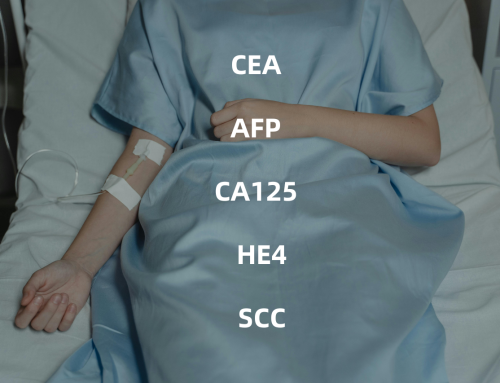Clostridium difficile infection is a common gastrointestinal infection, primarily caused by Clostridium difficile bacteria. According to data from the World Health Organization, over 500,000 people worldwide are infected with Clostridium difficile annually, and approximately 30,000 of them die. Symptoms of Clostridium difficile infection include diarrhea, abdominal pain, fever, and in severe cases, complications such as intestinal necrosis and sepsis, posing a significant threat to patients’ health and lives.

In this context, rapid diagnosis of Clostridium difficile infection becomes especially crucial. Traditional methods for detecting Clostridium difficile require lengthy cultivation and identification processes, consuming time and effort, with limited accuracy. On the other hand, rapid diagnostic products for Clostridium difficile infection can provide accurate test results within a short period. This aids doctors and patients in promptly detecting and treating infections, preventing disease progression and the occurrence of complications.
Therefore, the significance of rapid diagnostic products for Clostridium difficile is increasingly evident, becoming a focal point and area of interest within the medical industry. Biomapper is committed to providing high-quality raw materials for rapid test kit manufacturers.
Introduction to Clostridium difficile
What is Clostridium difficile?
Clostridium difficile is a Gram-positive spore-forming bacterium and is one of the common pathogens responsible for intestinal infections. This bacterium can survive in environments such as soil, water, and food, and it is capable of proliferating within the human intestines. The cause of Clostridium difficile infection is usually linked to the ingestion of contaminated food or water containing the bacterium or contact with surfaces carrying the bacterium, such as restroom facilities or doorknobs. Additionally, Clostridium difficile infection can also spread through person-to-person contact, particularly within institutions like hospitals, as the bacterium can persist within the human body for extended periods.

Transmission Pathways of Clostridium difficile
Clostridium difficile is a pathogen that can cause intestinal infections, and its main transmission pathways include the following:
- Fecal-Oral Transmission: Clostridium difficile primarily exists in the feces of infected individuals. It can be transmitted when contaminated surfaces or inadequately washed hands come into contact with the mouth. The bacteria then enter the gastrointestinal tract through the mouth and are eventually excreted in feces, forming a transmission chain.
- Healthcare Facility Transmission: There is an elevated risk of Clostridium difficile infection transmission within healthcare facilities, such as hospitals. This is because the bacterium can persist within the human body and easily spread in healthcare environments. It can linger on surfaces like medical equipment, bed linens, towels, or be transmitted via healthcare workers’ hands.
- Food and Water Transmission: Clostridium difficile can survive in water and soil. Ingesting untreated contaminated water or consuming uncooked contaminated food can lead to infection.
- Contact with Contaminated Surfaces: Clostridium difficile can survive on surfaces for an extended period. Contact with surfaces containing the bacterium, such as restroom facilities or doorknobs, can result in transmission.
- Airborne Transmission: While Clostridium difficile is primarily transmitted through fecal-oral routes, in certain circumstances, such as enclosed environments like hospitals, it can also be transmitted through the air.
Rapid Diagnosis of Clostridium difficile
Principle and Classification
Rapid diagnostic kits for Clostridium difficile are rapid diagnostic products based on immunological principles. The principle involves diagnosing through the detection of specific antigens or antibodies related to Clostridium difficile. Specifically, these kits typically include two types of antibodies: monoclonal antibodies that bind to specific antigens of Clostridium difficile and labeled antibodies that bind to the same antigen. During the diagnostic process, the sample is added to the kit, and the specific antigens of Clostridium difficile in the sample bind to the monoclonal antibodies in the kit, forming an antigen-antibody complex. Subsequently, the labeled antibodies bind to the complex, forming a labeled antibody-antigen-monoclonal antibody complex. Finally, the presence of Clostridium difficile in the sample is determined by detecting the signal of the label (such as a fluorescent dye or an enzyme) carried by the labeled antibodies.
Common types of rapid diagnostic products for Clostridium difficile include:
1. Immunological-based Rapid Diagnostic Products: These products diagnose Clostridium difficile by detecting specific antigens or antibodies. Common examples are immunochromatography test strips and immunofluorescence assay kits.
2. Molecular Biology-based Rapid Diagnostic Products: These products diagnose Clostridium difficile by detecting its DNA or RNA. Common examples are PCR test kits and nucleic acid amplification kits.
3.Mass Spectrometry-based Rapid Diagnostic Products: These products diagnose Clostridium difficile by detecting its metabolic products. Common examples are mass spectrometry test kits.
4. Each type of rapid diagnostic product serves as a valuable tool for efficiently diagnosing Clostridium difficile infections.
Advantages of Rapid Clostridium difficile Diagnosis
Traditional methods for detecting Clostridium difficile mainly involve culturing and identification to determine the presence of the bacterium in a sample. These methods require a considerable amount of time, often taking 24-48 hours to yield results. In contrast, rapid Clostridium difficile diagnostic products offer several advantages:
- High Accuracy: Rapid diagnostic products for Clostridium difficile employ highly specific detection methods, effectively minimizing the likelihood of misdiagnosis and false negatives.
- High Speed: Rapid diagnostic products provide results in a short time frame, typically ranging from minutes to a few hours, significantly reducing the diagnostic time.
- High Convenience: The operation of rapid diagnostic products for Clostridium difficile is simple and convenient, requiring no complex laboratory equipment or specialized skills. They can be used in various settings, including hospitals, laboratories, and even at home.
- High Sensitivity: Rapid diagnostic products for Clostridium difficile exhibit high sensitivity, capable of detecting minute amounts of the bacterium in a sample, ensuring accurate results.
- Cost-Effectiveness: These products are relatively low-cost, as they do not require substantial consumables or equipment. This lowers medical expenses and reduces patient burden.
Rapid Clostridium difficile diagnostic products effectively address the limitations of traditional methods, offering quicker and more accessible solutions for diagnosing infections.
The Usage Process of Rapid Clostridium difficile Diagnostic Products
The usage process of rapid Clostridium difficile diagnostic products is as follows:
1. Sample Collection: Begin by collecting a sample, typically a stool sample. Care should be taken to avoid contamination and sample desiccation.
2. Sample Preparation: Add the collected sample to an appropriate buffer solution to achieve the desired concentration.
3. Testing Procedure: Introduce the sample into the rapid diagnostic product as per the instructions provided. This usually involves adding reagents, mixing, and applying the sample onto the test strip.
4. Result Determination: According to the product instructions, wait for the designated time period and observe the results on the test strip. Generally, the presence of Clostridium difficile is indicated if specific colored lines or symbols appear on the test strip.
5. Result Interpretation: Refer to the product instructions to interpret the results and ascertain the presence or absence of Clostridium difficile in the sample.
6. Reporting Results: Document the results in the patient’s medical records and communicate them to the patient or physician.
Product Recommendations
Currently, our company has independently developed the following Clostridium difficile-related products:
Antigens & Antibodies for CD







